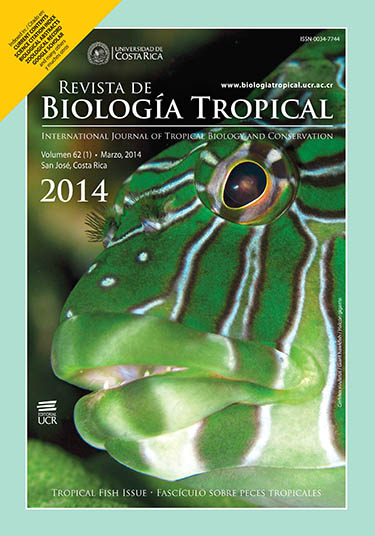Abstract
A variety of environmental and biotic factors determine vegetation growth and affect plant biomass accumulation. From temperature to species composition, aboveground biomass storage in forest ecosystems is influenced by a number of variables and usually presents a high spatial variability. With this focus, the aim of the study was to evaluate the variables affecting live aboveground forest biomass (AGB) in Subtropical Moist Forests of Southern Brazil, and to analyze the spatial distribution of biomass estimates. Data from a forest inventory performed in the State of Rio Grande do Sul, Southern Brazil, was used in the present study. Thirty-eight 1-ha plots were sampled and all trees with DBH ≥9.5cm were included for biomass estimation. Values for aboveground biomass were obtained using published allometric equations. Environmental and biotic variables (elevation, rainfall, temperature, soils, stem density and species diversity) were obtained from the literature or calculated from the dataset. For the total dataset, mean AGB was 195.2Mg/ha. Estimates differed between Broadleaf and Mixed Coniferous-Broadleaf forests: mean AGB was lower in Broadleaf Forests (AGBBF=118.9Mg/ha) when compared to Mixed Forests (AGBMF=250.3Mg/ha). There was a high spatial and local variability in our dataset, even within forest types. This condition is normal in tropical forests and is usually attributed to the presence of large trees. The explanatory multiple regressions were influenced mainly by elevation and explained 50.7% of the variation in AGB. Stem density, diversity and organic matter also influenced biomass variation. The results from our study showed a positive relationship between aboveground biomass and elevation. Therefore, higher values of AGB are located at higher elevations and subjected to cooler temperatures and wetter climate. There seems to be an important contribution of the coniferous species Araucaria angustifolia in Mixed Forest plots, as it presented significantly higher biomass than angiosperm species. In Brazil, this endangered species is part of a high diversity forest (Araucaria Forest) and has the potential for biomass storage. The results of the present study show the spatial and local variability in aboveground biomass in subtropical forests and highlight the importance of these ecosystems in global carbon stock, stimulating the improvement of future biomass estimates.##plugins.facebook.comentarios##
Downloads
Download data is not yet available.






